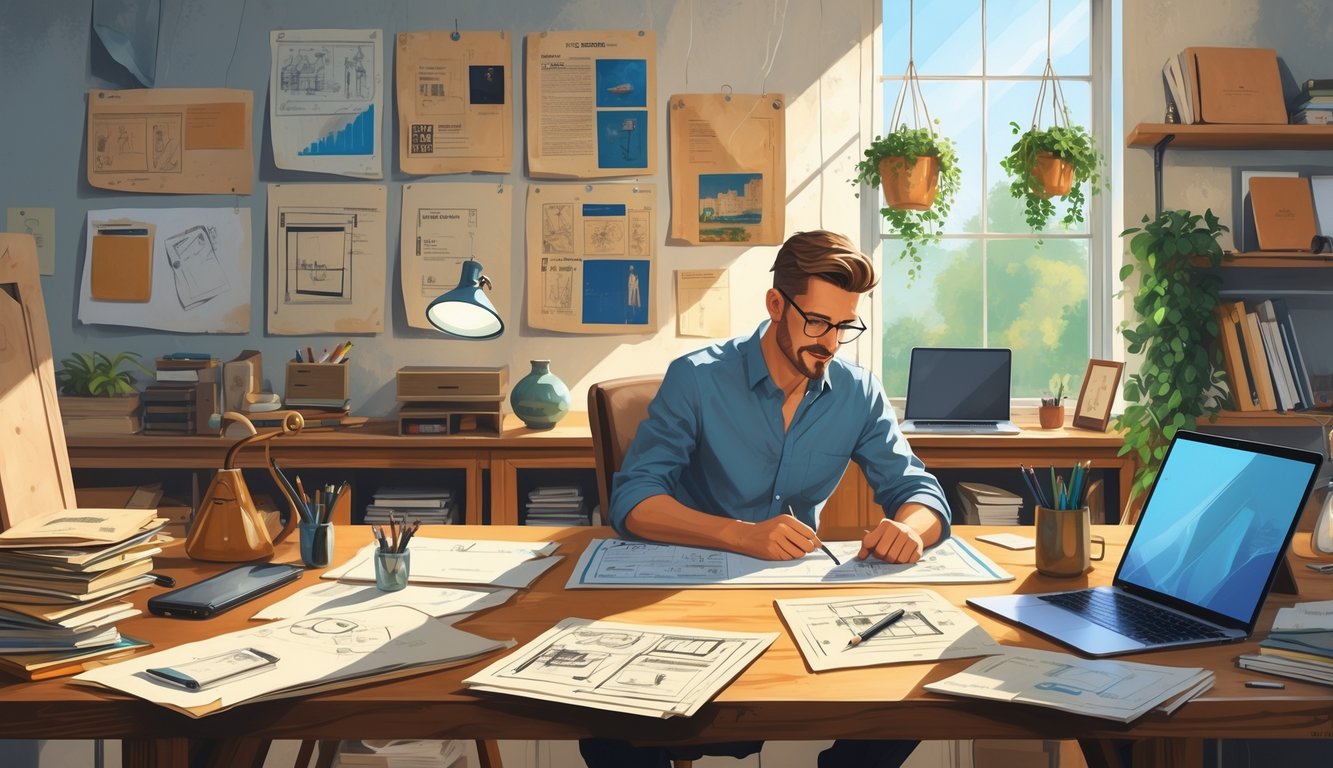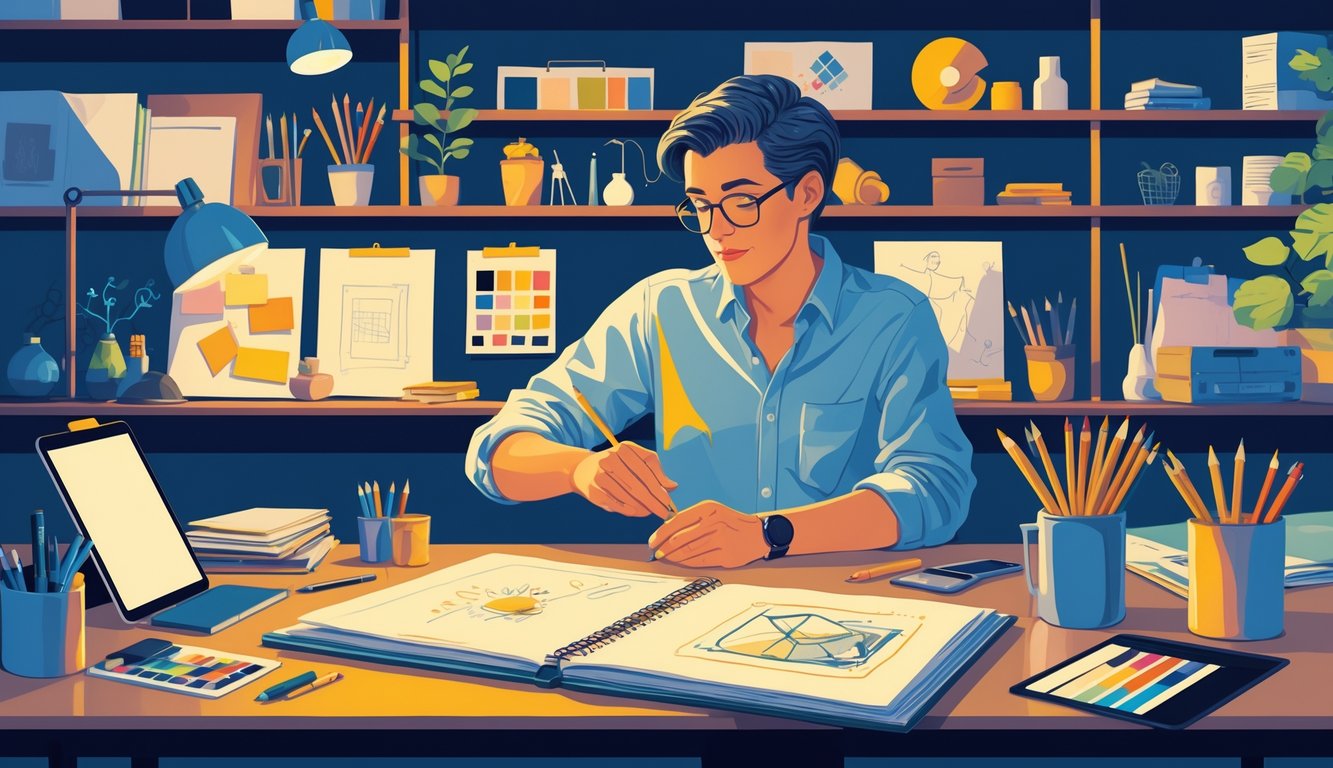
Honestly, this is embarrassing, but I’m still staring at the same half-finished canvas wedged behind my couch—if you can even call a two-year-old blob of paint a “canvas.” Why do creative pros never seem rattled about dragging abandoned stuff back to life? I’ve grilled designers, writers, even a management consultant who claims he’s got thirty years of project notebooks (is that healthy?), and apparently their trick isn’t some mystical reset button—it’s just seeing old work as raw material, not as some personal flop. That makes everything slightly less terrifying, I guess. Stanford even did a whole thing about updating ideas for modern problems (https://news.stanford.edu/stories/2025/02/how-turn-old-ideas-creative-solutions-modern-problems), but honestly, that sounds like a lot of work. Walt Whitman did it with scraps, which is weirdly comforting. Way less pressure than sorting through “in-progress-draft_12b-finalFINAL.docx.” Ugh.
Here’s what bugs me: there’s never a “right” time, but somehow pros squeeze this stuff in between real jobs, Metallica playlists, and the graveyard of tangled charging cables. Setting tiny, almost ridiculous goals like “fix the plot hole on page four” or “sketch with my left hand for no reason” works way better than those sweeping “finish this masterpiece by Friday” declarations. I’ve tried every habit-tracking app (they’re all boring), and nothing beats scribbling a goal on a sticky note I’ll lose by Tuesday.
If you’re expecting a motivational punchline here, sorry. Most of the time I’m poking at old projects, it’s because I’m out of new ideas or, let’s be real, dodging email. But, yeah, pros totally use the revisit as a confidence boost—kind of creative CPR, but without the self-help cringe (see jessicakmurray.com/lessons-from-revisiting-forgotten-creative-projects if you want proof). Sometimes, for reasons I can’t explain, it actually works. TV’s still on. I’m still here.
Understanding the Value of Old Projects

My digital folders are a disaster—just a mountain of abandoned files. Weirdly, every creative pro I know has the same mess: sketches no one’s seen, code snippets, half-baked marketing pitches that never escaped Google Docs. “Old” doesn’t mean “useless.” Not even close.
Rediscovering Past Work
Jumping into an old project file, I always brace for déjà vu. Never happens. Instead, there’s a mess: random drafts with brackets instead of dialogue, bizarre Photoshop layers, filenames with typos, color palettes that made sense in 2017 and nowhere else. My Adobe history is a haunted house.
Pulled up my failed branding thing from 2022 once. Learned more from that trainwreck than from anything I actually launched. I’m not alone; Visual Arts Review polled 204 pros—apparently 47% rework their own stuff multiple times. “No work is wasted,” they say. Sounds like something you’d put on a coffee mug, but sure.
Trends shift, and sometimes old assets suddenly become relevant—like that font I deleted in 2020, now everyone wants it. I forget what plugins I used half the time, so I’ve got a messy table of old color hexes and tools. Google Sheets: more like a digital attic.
Why Creative Pros Revisit Unfinished Projects
If a project was truly garbage, I’d delete it, right? But here I am, insomnia-fueled, sifting through incomplete junk instead of sleeping. Industry folks love to say unfinished stuff is R&D, not failure. Artist Strong calls it “revisiting for growth.” Sure, why not.
No deadline, no client, so why bother? Jessica K. Murray says “personal growth boosts confidence.” She’s not wrong, I guess. I cringe at my 2018 video edits, but frame by frame, my cuts are actually sharper now. Sometimes, abandoned concepts were just ahead of their time. Or maybe I was just clueless. Hard to tell.
It’s always the same: I find something half-formed, save it as “Final_v4_edit2” (again). Pros know unfinished projects aren’t failures; they’re just badly labeled experiments for whatever weird obsession I’ve got this week.
Identifying Hidden Potential
Every now and then, I open a forgotten file and—surprise—there’s an old logo idea that fits a new client perfectly. No clue what font I used. Zero memory of the color scheme logic. HandwrittenKin says cringe is where the gold is. I don’t know. But sometimes a rough audio file teaches me more about EQ than any polished track.
Tables don’t organize inspiration, but putting failed slogans side by side? Suddenly, one line’s worth saving. Even the dumbest slogans end up as Instagram captions. Old code snippets become the skeleton for some “innovative” app feature five years later. Go figure.
Now I keep a running list—messy, not alphabetized—of what worked and what flopped. The real win isn’t the finished project. It’s the half-baked core idea, buried in digital dust, waiting for some new context or tech to make sense. Or maybe not. Who knows.
Finding Fresh Inspiration
Nobody warns you about old projects just sitting there, taunting you, like a pile of sweaters you’ll never wear again. Fresh inspiration? Never on demand. Creative energy fizzles, craftsmanship looks clumsy, and the best ideas always show up when I’m nowhere near my notes or laptop.
Tapping Into Creative Energy
Some days, finding creative energy is like hunting for socks. At least one is always missing. Tried Phil McKinney’s “mine your old ideas” trick. Dug through last year’s journals. Ended up with a sticky note rant that only made sense after I mashed it with an abandoned pitch deck.
Blending failed drafts, outtakes, chat logs—occasionally, that’s where the magic happens. Kind of like those questionable leftovers in the fridge. (Don’t eat those, by the way.) Angela swears her creativity spikes after grocery shopping. Mine? Doomscrolling, or accidental naps. When I force myself to review old sketches and sticky notes at 1am, the odds of reviving something useful go way up. Or maybe I’m just delirious.



